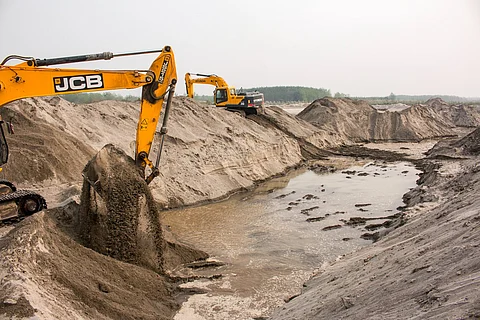
- HOMEGROWN WORLD
- #HGCREATORS
- #HGEXPLORE
- #HGVOICES
- #HGSHOP
- CAREERS
- ABOUT US
- CONTACT US

All great civilizations have grown from harnessing the power of a river. Mesopotamia, often called the birthplace or cradle of civilization, flourished because of the Tigris and Euphrates rivers. The great Egyptian empire grew along the banks of the river Nile. We are blessed to have the river Ganges flowing through and enriching our country. Today is the International Day of Action For Rivers, a day observed annually, and dedicated to saving, celebrating, and creating awareness about the importance of rivers. In the era and point of history that we are living in where climate change threatens our very existence every day, it has become absolutely necessary to preserve and protect the natural world surrounding us.
This brings us to a unique problem that has been plaguing many Indian rivers, especially the Spiti River. The Spiti river is a tributary of the great Sutlej river. Spiti river nurtures and sustains the life that inhabits the beautiful valleys of the Lahaul-Spiti district of Himachal Pradesh. Most of Himachal Pradesh is an agrarian economy. The Spiti Valley of Himachal is a trans-Himalayan desert where the local inhabitants sustain themselves only on one farming season. For these agricultural communities, the Spiti river is the sole lifeline in this region. However, the river ecosystem is under threat.
The growing demand for sand in the construction industry has caused severe social and environmental impacts. The rising demand for sand has led to widespread illegal sand mining in the region. 8,360 cases of illegal sand mining were reported in Himachal Pradesh, in 2019-2020, according to a report from 2020 by South Asia Network on Dams, Rivers, and People. As a result, the river has inundated farmlands leaving many people landless.
So, the work the river has to do in carrying sediments helps dissipate some of the energy that is already there in flowing water. Now, when you remove sand, which is an important part of the sediment from a particular stretch of the river, then there is less work for the river to do, and less energy that can be dissipated. And therefore, the extra energy that is now left in flowing water can for example erode deposits.
Jagdish Krishnaswamy, Dean, School of Environment and Sustainability, Indian Institute for Human Settlement
Now, the problem that has arisen is a double-edged sword. While there is a flaring environmental problem with illegal sand mining, there is also a class angle to it. Some local residents believe that sand mining is a necessary evil because the poor cannot afford to buy cement to build their homes. However, they also claim that excessive extraction has had a significant negative impact on the river ecosystem.
"People extract sand from the river because of which the river changes its course and washes our lands away. It’s been going on for 30 years now. The river also floods the forests nearby."
Dechen Angmo, the pradhan (leader) of Rangrik, a village in Himachal Pradesh
This informative video story by Mongabay India shows the transformation of the river through the years, while also highlighting the plight of the residents affected, and their demand for clarity in sand mining law, to save their lands. Mongabay India is a digital publication that focuses on conservation and environmental issues in India. A situation such as this demands proper methodical government intervention. It is not just the Spiti River that has been facing this crisis but also other rivers across India such as the Beas river in central Himachal Pradesh, the Sindh River in Madhya Pradesh and more. Even if strict laws are placed by the government, they will also have to tackle the sand mafia that has been harming lives and the ecology.
You can find out more about Mongabay India here.
